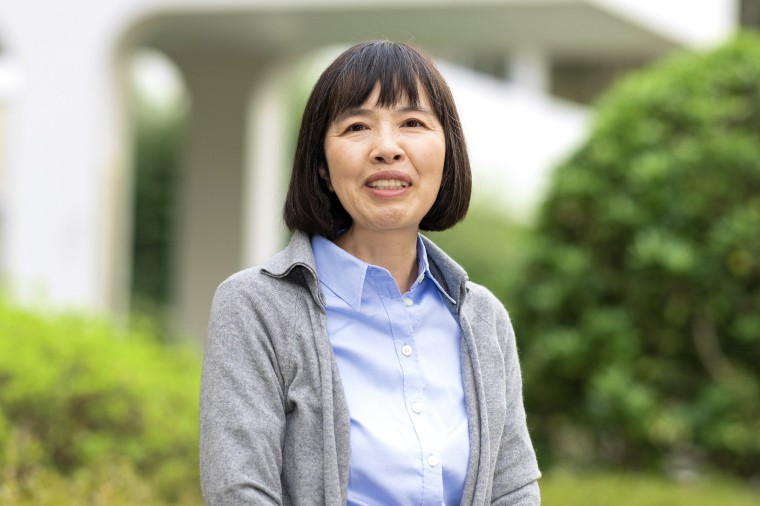Researcher
Mariko Okada Professor
- Laboratory:
- Laboratory for Protein Network
- Research Interests:
- Understanding the cell, the smallest unit of life, as a dynamic system of molecular interactions

Overview
We aim to elucidate the principles of signaling network complexity by combining omics measurements with mathematical modeling. Our goal is to uncover the mechanisms and rules of the regulatory network and apply them to the control of cell fate. Additionally, we are focused on developing cutting-edge modeling techniques, incorporating technologies such as natural language processing (NLP) and deep learning (DL).
Q&A

What are the unique aspects or strengths of your research?
Our group has a unique strength in large-scale, data-driven mathematical modeling that effectively combines both experimental (wet) and computational (dry) approaches. While mathematical models aimed at describing gene regulatory mechanisms in detail often face criticism related to network identification and parameter estimation, we view these challenges as opportunities. We tackle them from both biological and data-driven perspectives, working closely with many theoretical and computational researchers in Japan and other countries to find effective solutions.
How do you think the results of your research will benefit society or industry?
One notable aspect is that the mathematical models we create can evolve into a shared foundation for society. These models play a crucial role in drug discovery, assisting tasks such as target identification, elucidation of regulatory mechanisms, and dose-response analysis. Furthermore, the computational tools developed for mathematical modeling can serve as valuable educational resources.
How is data science utilized in your research?
In the process of building mathematical models, we apply data science techniques such as literature mining and gene network identification such as natural language processing (NLP) and large language models (LLMs), as well as parameter estimation using genetic algorithms and neural networks (NNs). We also use deep learning (DL) for analyzing single-cell sequencing data and for interpreting the large volumes of simulation results generated from mathematical models.
Please share examples of collaborative research or the potential for future collaboration.
As artificial intelligence (AI) continues to advance, there is growing recognition that it cannot fully explain complex molecular mechanisms. This has brought attention to the importance of mathematical modeling. In recent years, our group has welcomed several professionals from pharmaceutical companies into our PhD program. One of them completed their Ph.D. last year, successfully identified a new skin aging marker and uncovering how its inhibitor works. There is also increasing interest in mathematical modeling in the field of Quantitative Systems Pharmacology (QSP), and we have seen more opportunities for collaborative research as a result.
What are the prospects and goals for your research?
By integrating the individual mathematical models of signaling pathways that we have developed so far, we aim to build a comprehensive model capable of predicting drug responses and potential side effects. This has been a long-standing goal—something I have dreamed of achieving since I began working in mathematical modeling over 20 years ago. I am also interested in exploring protein-protein interactions within signaling pathways, which have been difficult to analyze using conventional structural biology alone. By combining molecular dynamics simulations with mathematical modeling, we hope to uncover how genetic mutations influence entire cellular networks. It is a challenging research theme. However, we are making progress through our ongoing collaborations with researchers from various fields.
Selected papers
Research papers
- K. Arakane, H. Imoto, F. Ormersbach and M. Okada, Extending BioMASS to construct mathematical models from external knowledge, Bioinformatics Advances, 4(1), vbae042 (2024).
https://doi.org/10.1093/bioadv/vbae042 - H. Imoto, S. Yamashiro and M. Okada, A text-based computational framework for patient-specific modeling for classification of cancers, iScience, 103944 (2022).
https://doi.org/10.1016/j.isci.2022.103944 - H. Michida, H. Imoto, H. Shinohara, N. Yumoto, M. Seki, M. Umeda, T. Hayashi, I. Nikaido, T. Kasukawa, Y. Suzuki and M. Okada-Hatakeyama, The number of transcription factors at an enhancer determines switch-like gene expression, Cell Reports, 31(9), 107724 (2020).
https://doi.org/10.1016/j.celrep.2020.107724 - H. Shinohara, M. Behar, K. Inoue, M. Hiroshima, T. Yasuda, T. Nagashima, S. Kimura, H. Sanjo, S. Maeda, N. Yumoto, S. Ki, S. Akira, Y. Sako, A. Hoffmann, T. Kurosaki and M. Okada-Hatakeyama, Positive feedback within a kinase signaling complex functions as a switch mechanism for NF-κB activation, Science, 344(6185), 760-764 (2014).
https://doi.org/10.1126/science.1250020 - T. Nakakuki, M. R. Birtwistle, Y. Saeki, N. Yumoto, K. Ide, T. Nagashima, L. Brusch, B. A. Ogunnaike, M. Okada-Hatakeyama* and B. N. Kholodenko*, Ligand-specific c-Fos expression emerges from the spatiotemporal control of ErbB network dynamics, Cell, 141(5), 884-896 (2010).
https://doi.org/10.1016/j.cell.2010.03.054 *Corresponding authors.
